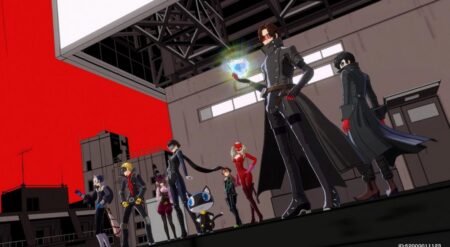From Software‘s soulsborne titles have become monumental event releases. After the release of Sekiro: Shadows Die Twice in 2019, the studio’s fans have waited the longest stretch of time yet between soulsborne releases. The wait has been a long one, with fans desperately waiting for information between trailers and tiny shreds of information. But, now that Elden Ring is just beyond the horizon, is it ultimately worth the long wait?
To put it briefly, definitely. Every one of From Software’s recent titles has been iterative. They build on those that came before, somehow finding ways to constantly expand and tweak the genre they invented in small but impactful ways. This has brought the studio to Elden Ring, which aims to inject a healthy dose of an open world into the genre.
For fans of From Software’s work, a lot in Elden Ring will be familiar. The game starts with a surprisingly explicit introduction before giving players access to a character creator that quickly reaches absurdism. Players pick from a range of starting classes that act more as a starting suggestion than a rigid construct.
From there, it is easy for fans to get their bearings thanks to genre mechanics being thinly veiled behind new names. Bonfires are Sites of Lost Grace. The Estus Flask is the Flask of Crimson Tears. The Chosen Undead is now the Tarnished. These changes come not just to avoid players claiming the developers are being lazy, but to help adapt the mechanics into Elden Ring’s brand new setting written by George R. R. Martin.
The settings of soulsborne games play a massive role in the player experience. One of the magical things about the games that resonates so much with fans is the lack of explicit direction given to players, pushing them to explore their surroundings naturally and piece together stories and lore from item descriptions and esoteric conversations. The setting also dictates the tone of each title. Bloodborne’s gothic spires and claustrophobic streets help the player feel surrounded and overwhelmed by the task of identifying the source of the plague gripping the city. The decaying architecture and decrepit wastes of Dark Souls contextualize the world’s dying state and illustrate the world’s cyclical nature and the ultimate hollowness of the player’s victory.
For Elden Ring, its setting is an absolute triumph. The dilapidated structures of a military fort are illuminated only by the colossal golden tree in the far distance that slowly sheds strings of its brilliance over the land. Tight winding corridors in a castle lead to a long hall with limbs suspended overhead, holding a shambling mini-boss. A poisonous swamp is covered in dense fog that makes it difficult to see and keeps you on your toes.
Elden Ring’s world of The Lands Between brings a new scale to From Software’s work that is as jaw-dropping as it is proficient. There is so much variety and beautiful vistas here that it is difficult not to get lost in the joy of simply exploring every nook and cranny whenever you earn access to a new area. It also follows Sekiro’s lead in explaining its narrative and key characters more upfront. But, it still excels at the air of mystery that defines exploration in the genre and has plenty of excellent environmental story-telling for players to piece together throughout their journey.
But of course, the main standout that most players come to soulsborne titles for is the combat. From Software’s games are well known for their punishing difficulty thanks in part to Dark Souls’ marketing material emphasizing the catchy phrase “prepare to die.” The community that sprung up around the game has reveled in the punishing nature of the genre and telling newcomers to simply “git gud.” However, it is easy to make a horribly difficult game. Setting enemy damage numbers high and player damage numbers low is enough to make a game with the most basic of mechanics brutally challenging.

What makes soulsborne games difficult is that they are unflinching, but they are also fair. Every title has strict rules to encounters and mechanics that must be followed for success, and every time a player fails, there is a clear lesson to be learned for one’s next attempt. Bosses may take you out in one or two hits, but that is circumvented by grinding out a higher level or better equipment, finding a boss’s weakness, or just learning its telegraphed attacks and how to avoid their hitboxes.
Elden Ring carries on this tradition exceedingly well while also giving players more options than ever before. The stealth mechanics of Sekiro have been organically implemented, allowing players to clear entire areas without dodging a single attack. Weapons can now have special moves known as arts that can be swapped out, allowing even non-magic users to get some use out of their Focus. These arts have a ton of variety to them that can fit into any play style, and feel so natural that it is difficult imagining playing a soulsborne game without them after getting used to their inclusion.
Spells in Elden Ring have also been expanded with a ton of variety without becoming too overpowered. Ranged weapons have also become more viable thanks to the increased scale of the world. At the same time, melee fighters can take advantage of new moves to stagger enemies and leave them vulnerable for quick follow-up attacks or an easy backstab. The new horse mechanic is also welcome, especially when tackling the new gigantic bosses that will never stop striking players with awe.
However, Elden Ring is held back in just a few areas. The biggest is the game’s complete lack of accessibility options. The release of one of these games now seems always to spark a conversation around their difficulty. Is the genre’s punishing nature an integral part of its identity, which would be lost with easier settings? However, I find it hard to argue against the idea that more players being able to enjoy and appreciate a work of art would be better. The punishing difficulty can still be there for those who want it, while lower difficulties and accessibility options would allow others to get in on the unique breed of fun the genre offers.
Soulsborne difficulty has become a large part of the genre’s identity within the gaming community. Still, I think that what really defines the genre within the context of the titles themselves are their settings, stories, intricate lore, and extremely well-tuned mechanics, and none of that will go away if people with disabilities or who don’t want to spend hours grinding out a boss can reach the end of the game.

The second issue with Elden Ring arises from its open world. While exploring it to find new locations and gather crafting components to make items is a blast, it introduces some AI issues for enemies. The AI of soulsborne games has always been prone to be exploited or making silly mistakes like slipping off ledges or killing each other.
These aspects have only been exacerbated by Elden Ring’s open world, making some of its areas almost absurdly easy to clear of enemies as they don’t seem able to properly react or adjust to the amount of space and options players have when approaching the encounters. Many of them manage to be still very difficult, but there were numerous locations that I was able to clear without giving them much thought simply because the AI was not equipped to deal with how open of a place they were in, which felt a bit odd when juxtaposed with the rest of the game’s difficulty.
Even with these issues, Elden Ring is an absolute triumph that will surely please all of the many players eager to get their hands on it. I can’t wait to see what secrets, builds, and details the community can find that I missed, and with the immense scale of the title, the soulsborne community will have plenty of content to keep them occupied for months to come. From Software’s track record with the genre has been incredible to see, especially as so many competitors have tried their hands at it with very few finding success. The studio is truly the master of soulsborne games, and Elden Ring proves that conclusively.
Elden Ring releases on February 25 for PC, PlayStation 4, PlayStation 5, Xbox One, and Xbox Series X/S.
Elden Ring
-
Rating - 9/109/10
TL;DR
Even with its few issues, Elden Ring is an absolute triumph that will surely please all of the many players eager to get their hands on it. From Software’s track record with the genre has been incredible to see, especially as so many competitors have tried their hands at it with very few finding success. The studio is truly the master of soulsborne games, and Elden Ring proves that conclusively.







